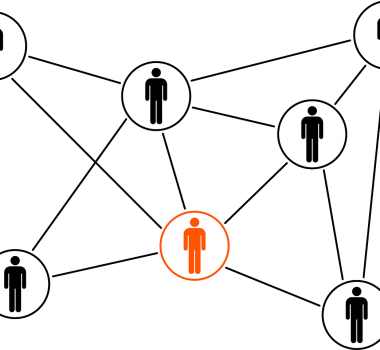As a Supervisor, Are You Leading or Bullying?
(This is an updated version of a post I did in October 2012.) “I feel like you’re intimidating and bullying me.” These are the words of a female employee during a meeting with her male supervisor, who intended to set expectations with her. Taken aback, the supervisor started to question his behavior. With stories of children being bullied at school and with differences between generations at work, it makes you stop and think about bullying in the workplace. As a supervisor, how do you know whether you are leading or bullying? At work, a few employees will attempt to deflect responsibility and attention away from themselves, especially when a supervisor addresses a work issue. One thing an employee may say, whether they really believe it or not, is that you are bullying” them. It seems for some employees, no one – not even their supervisor – has a right to set or clarify expectations for their conduct or performance at work. Also, some employees may use the word “intimidation” when describing what it felt like when they were called into their supervisor’s office to discuss a performance issue. Well, sure, it can be intimidating, especially for those who know deep down they’ve failed in their work commitment. But that doesn’t mean the boss was indeed intimidating, purposefully or not, and it doesn’t mean they are a bully. What it does mean is that the use and misuse of power and authority by supervisors is often at the heart of perceptions of bullying.
Correlations Between Bullying Behavior and Leadership Style and Traits
Your leadership style and other personality traits can make it more likely an employee will perceive they are bullied, even if your manner or behavior doesn’t cross a line (usually set by the organization’s standards of conduct). One study found that bullying correlated with all four leadership styles measured and that:- An autocratic leadership style was the strongest predictor of bullying observed by others;
- A laissez-faire leadership style emerged as a predictor of self-reported as well as observed bullying; and
- An unpredictable style of leadership, where punishment is meted out or delivered on leaders' own terms, independent of the target employee’s behavior was the strongest predictor of self-perceived bullying.
Distinguishing Bullying and Supervisory Behavior
According to the Workplace Bullying Institute, bullying is “repeated, health-harming mistreatment by one or more employees of an employee: abusive conduct that takes the form of verbal abuse; or behaviors perceived as threatening, intimidating, or humiliating; work sabotage” or a combination of these. It is often a “systematic campaign of interpersonal destruction” that causes harm such as health issues, adverse employment actions, (i.e., demotion, termination, reprimand, failure to promote, etc.), or even constructive discharge. Bullying behavior can include ostracizing or isolating, being aggressive or intrusive, minimizing, intimidating, criticizing, or spreading gossip about the target of their bullying. Often, a peer or supervisor will bully another employee due to professional jealousy, being seen as a threat to the bully’s social status to their ability to be in control, or being insecure or having low self-esteem. To check your behavior as a supervisor, use the chart below to clarify bullying versus appropriate supervisory behaviors:| Bullying | Leading as a Supervisor |
| During a performance review, the supervisor is intentionally biased or gives inaccurate feedback because they don’t like the employee even though the employee is a good performer. | During a performance review, the supervisor shares honest, substantiated feedback with the employee, whether or not they like the employee as a person. |
| The supervisor deliberately excludes an employee from workplace meetings and activities for no good reason or for a concocted reason while other employees on the same team or in the same job classification are invited to attend. | The supervisor includes an employee in workplace meetings and activities that other employees on the same team or in the same job classification attend, whether or not the supervisor like the employee and even if the employee is not the best performer. |
| The supervisor instigates, encourages, or fails to stop others from spreading malicious gossip, jokes, or rumors about an employee. | The supervisor refrains from joking about, gossiping or spreading rumors about any employees, and addresses such behavior with other employees who engage in it. Instead of listening to gossip and rumors, the supervisors ignores it, or if warranted, follows up with the employee directly and privately, giving them an opportunity to give their version of the situation. |
| The supervisor pesters, spies, or stalks the employee with no business reason for doing so. | The supervisor monitors all employees’ whereabouts and productivity if there is a business reason for doing so, and documents and addresses any issues of attendance or productivity privately with an employee, giving them an opportunity to give their version of the situation. |
| The supervisor criticizes or belittles the employee persistently or allows others to do so without saying anything. | The supervisor speaks privately with the employee if there are documented conduct or performance issues, and gets the employee’s explanation during the conversation. |
| The supervisor applies undeserved or unwarranted corrective action or discipline to an employee. | The supervisor addresses only work-related issues, supported by relevant information regarding a situation, including the employee’s version of events, before deciding whether or not to discipline an employee for workplace misconduct. |
| The supervisor consistently gives a good performer assignments that are beneath their position to create a feeling of uselessness. | The supervisor holds all employees accountable to job performance standards and documents/addresses sub-standard performance with interventions such as re-training, job shadowing, or a performance plan. |








